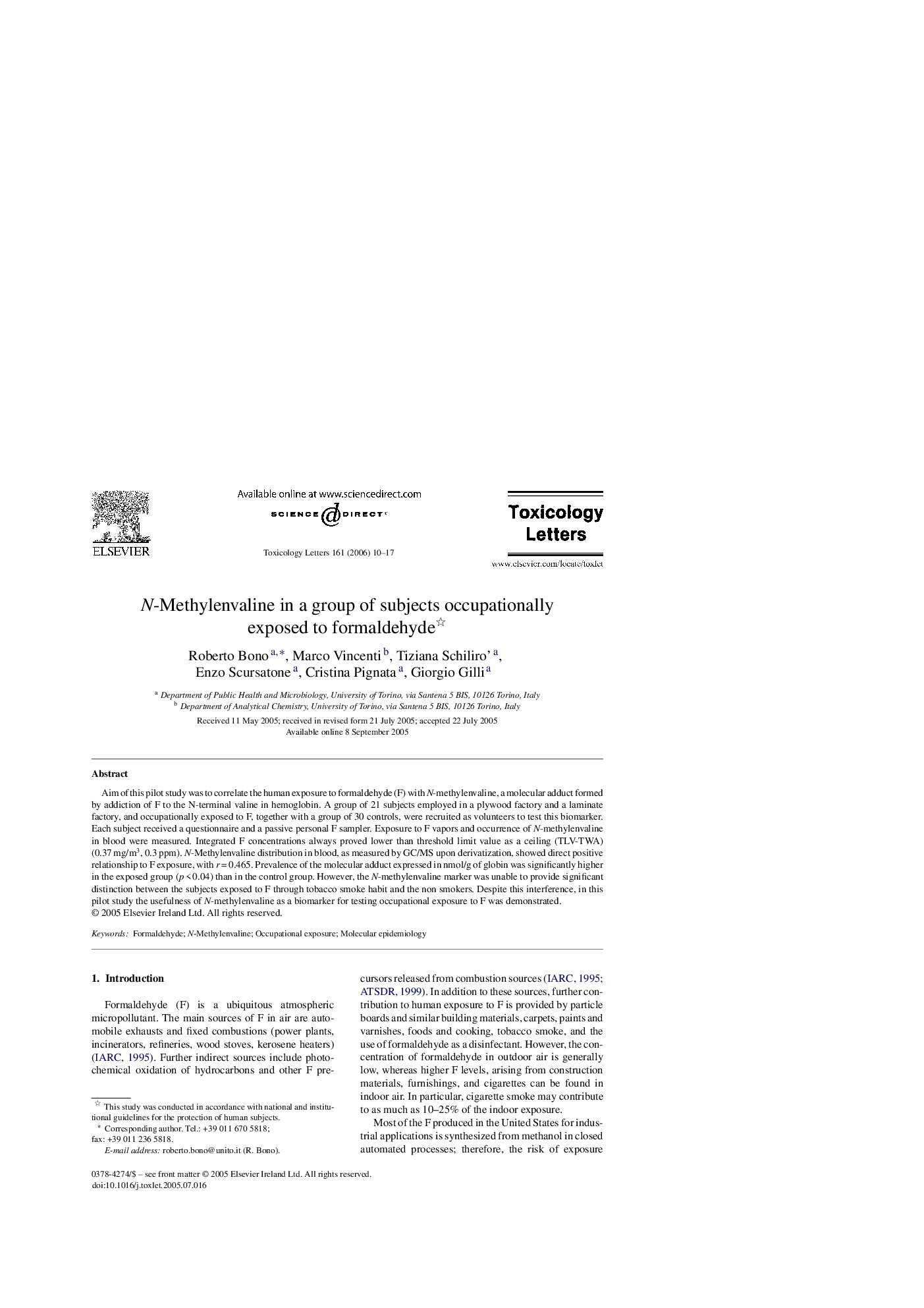| Article ID | Journal | Published Year | Pages | File Type |
|---|---|---|---|---|
| 2601463 | Toxicology Letters | 2006 | 8 Pages |
Aim of this pilot study was to correlate the human exposure to formaldehyde (F) with N-methylenvaline, a molecular adduct formed by addiction of F to the N-terminal valine in hemoglobin. A group of 21 subjects employed in a plywood factory and a laminate factory, and occupationally exposed to F, together with a group of 30 controls, were recruited as volunteers to test this biomarker. Each subject received a questionnaire and a passive personal F sampler. Exposure to F vapors and occurrence of N-methylenvaline in blood were measured. Integrated F concentrations always proved lower than threshold limit value as a ceiling (TLV-TWA) (0.37 mg/m3, 0.3 ppm). N-Methylenvaline distribution in blood, as measured by GC/MS upon derivatization, showed direct positive relationship to F exposure, with r = 0.465. Prevalence of the molecular adduct expressed in nmol/g of globin was significantly higher in the exposed group (p < 0.04) than in the control group. However, the N-methylenvaline marker was unable to provide significant distinction between the subjects exposed to F through tobacco smoke habit and the non smokers. Despite this interference, in this pilot study the usefulness of N-methylenvaline as a biomarker for testing occupational exposure to F was demonstrated.
